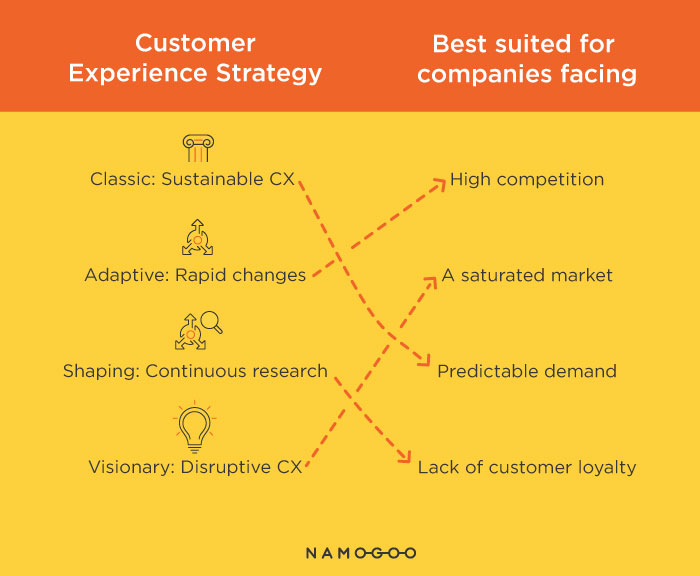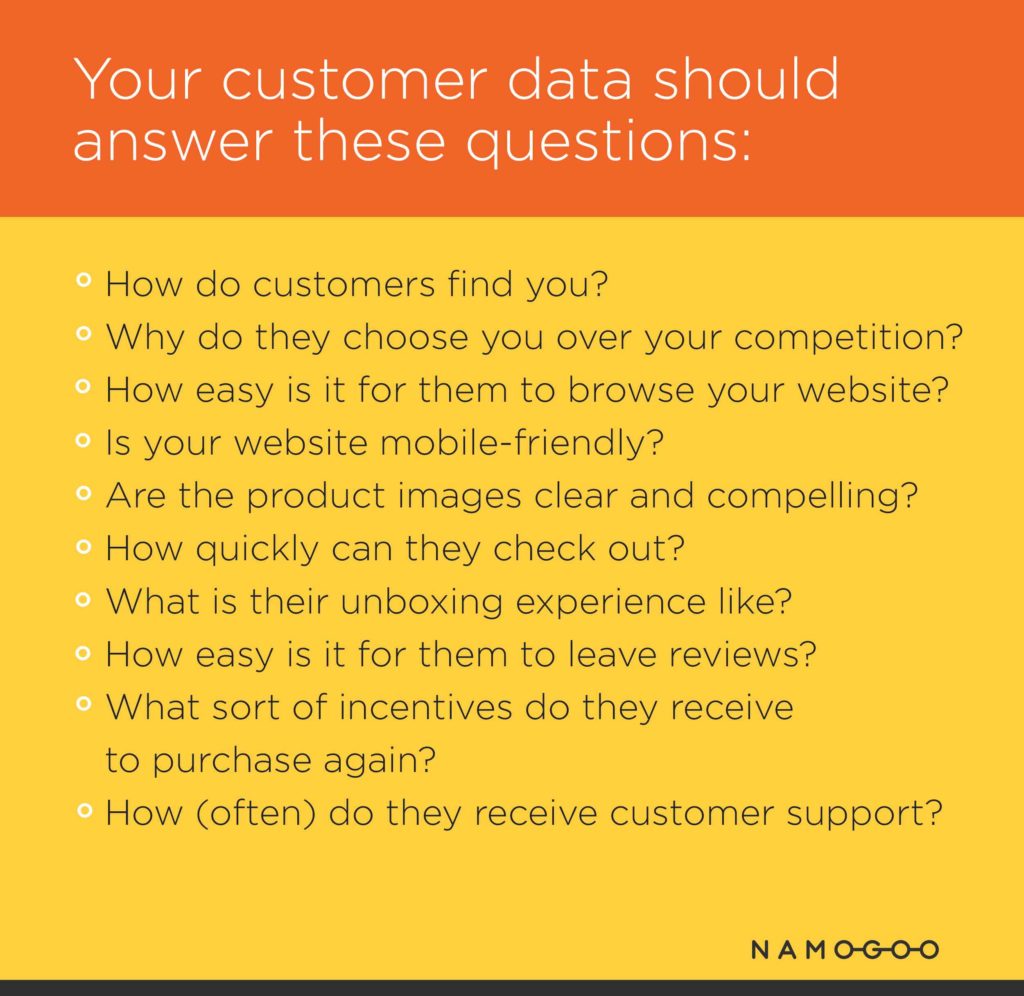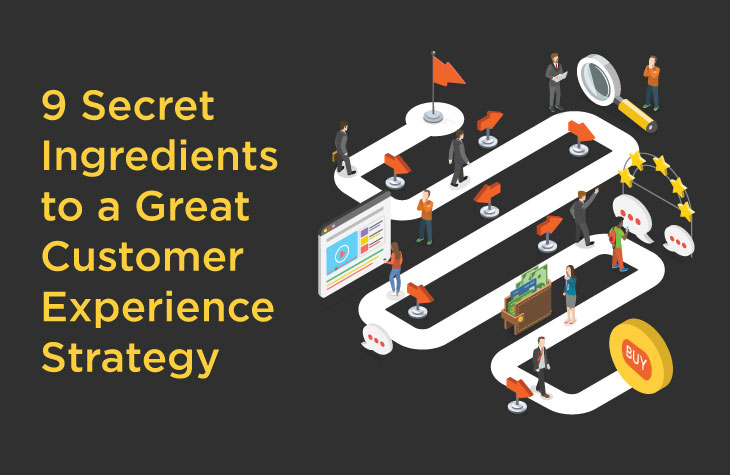Service with a smile may not work in the eCommerce world, but providing a positive customer experience is still essential.
Customer experience is a term used to categorize and describe the experience a customer receives while interacting with a business’s marketing and sales messages.
Ideally, these interactions will make up a “path to conversion”, also called a customer journey, that facilitates the progression of a potential customer from introduction to completed sale and beyond
It might seem like a relatively new concern for eCommerce companies looking to improve conversion rates and sales on their websites but before the online shift,brick-and-mortar retailers focused on customer experience for many years by using upsell bins, improving store design, and optimizing POS and checkout.
In fact, for traditional retailers, like Abercrombie & Fitch, Build A Bear, and Nordstrom, customer experience has been successfully employed to differentiate themselves from their competitors and create a brand synonymous with quality.
This emphasis has also impacted the bottom line for these companies. Forrester reports that improving CX can increase profitability by more than 500%, as well as reducing customer acquisition and employee hiring costs.
What is a positive eCommerce customer experience?
CX starts with engaging customers with relevant events well before the sale, and continues after the sale with advocacy and brand loyalty.
What goes into creating a positive eCommerce customer experience?
- a user-friendly website
- a rapid checkout process
- personalized shopping experiences
- clear product pages
- easy returns
- outstanding customer support
If your analytics dashboard is showing an increase in repeat traffic that’s a pretty good indicator of a great customer experience. Bonus points go to positive customer experiences that not only bring in repeat business but also turn those customers into advocates for your brand that spread the word
What is a customer experience strategy?
A customer experience strategy defines, describes, and details how to deliver a positive and meaningful customer experience across all sales and marketing channels. However, in 2019, as online customer journeys become increasingly complex, creating an omnichannel CX strategy is complicated. To name a few, a CX strategy should consider factors such as marketplace data, consumer research and vision and should specify how to improve key areas, including:
- Ease of use
- Ease of purchase
- Catering to individual customer needs
- Accessibility
An effective customer experience strategy involves all departments in a company. By doing so, your company will be able to create a unified effort and process designed to improve the customer experience.
How can your company create or improve a customer experience strategy? Here are nine tips to get you started.
The 9 Secret Ingredients for a Great CX Strategy
1. Define the Right Style
Your CX strategy changes depending on the predictability of your market, and to every market there is a different strategic style. The Harvard Business Review, suggests the four strategic styles below. They include:
- Classical: </bThis style is best for companies that operate in highly predictable industries. Companies utilizing a classical style build a favorable market position by planning well into the future, and remaining with the same strategy for several years. Ask yourself: Can I sustain my customer experience strategy for many years forward?
- Adaptive: This is best for companies in unpredictable industries. Such companies require a more adaptive strategy that can be easily and rapidly changed. Ask yourself: Is my infrastructure one that can change rapidly? Is the decision making process quick and easily adaptable?
- Shaping: This is one step beyond the adaptive style. While it too changes frequently, it focuses beyond the boundaries of the company to define new markets, standards and business practices. Ask yourself: Do I leave room for market feedback to power rapid decision making?
- Visionary: This bold and entrepreneurial style can create entirely new markets or visions, and views the environment as a way to be molded to a company’s advantage. But it’s more similar to a classical strategy, because companies take calculated steps to reach goals without switching tactics. Ask yourself: What does the future hold for the industry and how can we provide a customer experience that disrupts it?
Which CX strategy style is the right one for your eCommerce business? It depends on many factors such as your offering, management styles, human resources, technological infrastructure, the market, and several other factors.

Products that have rigid demand, a high percentage of repeat customers, and a small number of competitors, such as B2B eCommerce, are better suited for the classical approach. Apparel, however, which is characterized by high competition and lack of product differentiation, is a good match for the adaptive model.
A shaping or even a visionary strategy is great for eCommerce brands looking to differentiate themselves and stay ahead in a competitive market but, at the same time, can sustain the long term vision necessary to facilitate it.
2. Create a Journey for Your Strategy
While it doesn’t have to entertain, a good strategy should tell a good story. First, ask yourself what is the correct place to start? Some might start with detailing the goals up front. Some might prefer to opt for a “problem – solution” type of story, which details current challenges and their solutions.
Second, establish a theme by asking what is the main point of your customer experience strategy? Like any good story, your strategy should have a build up to a literary climax. For example, in the “problem – solution” model the climax is reached when presenting suggested solutions and their foreseeable outcomes. Finally, a good strategy brings it all together with a solid conclusion.
3. Map Your Customer Data
Map out the touchpoints, collect data, and figure out how to optimize the process. We all collect data. However, for your data to effectively fuel decision it should address questions such as:
How do customers find you?
Why do they choose you over your competition?
How easy is it for them to browse your website?
Is your website mobile-friendly?
Are the product images clear and compelling?
How quickly can they check out?
What is their unboxing experience like?
How easy is it for them to leave reviews?
What sort of incentives do they receive to purchase again?
How (often) do they receive customer support?

4. Go for Omnichannel
Striving for an omnichannel experience is an important part of an effective CX strategy. Omnichannel businesses provide customers with a seamless integrated shopping experience, whether it’s from a desktop, a mobile device, by phone or in a brick-and-mortar store.
No matter where they shop, customers receive the same experience and messaging through every channel. The result is an effortless shopping experience.
When creating a CX strategy, it’s necessary to keep in mind the omnichannel experiences that most customers will traverse.
Therefore, if you presently operate an eCommerce brand, map out your current customer journeys across all channels (A). Then, map out the desired customer journeys expected to improve conversion rates, reduce acquisition costs, and boost overall revenue (B). Finally, your customer experience strategy should detail how to get from A to B.
5. Focus on the Customer
Always maintain a customer-centric approach. Ask yourself: What do my customers want? And what is the best way I can provide it?
Don’t assume that you know what is best for your customers. Spend time talking to them and collecting data. Find out what is important to them, why they choose the products that they do, and what matters to them when they shop. Focus on their needs. It’s all about them.
For most of you, a/b testing, user recordings, and VPN solutions are already being implemented to learn about how your customers interact with your web properties and apps. However, in 2019, the main issue impacting the customer journey and reducing online revenue will be malware and, more specifically, malvertising.
For example, Dollar Shave Club recently discovered that over 10% of their website visitors received malware advertising while on their website, which resulted in fewer subscriptions.
Using Namogoo, Dollar Shave Club was able to experience a significant spike in their subscriber conversion rates by, first, spotting that their customers were being hijacked by malicious ad injections, and, second, blocking those injections to improve the customer journey and boost conversion rates.






